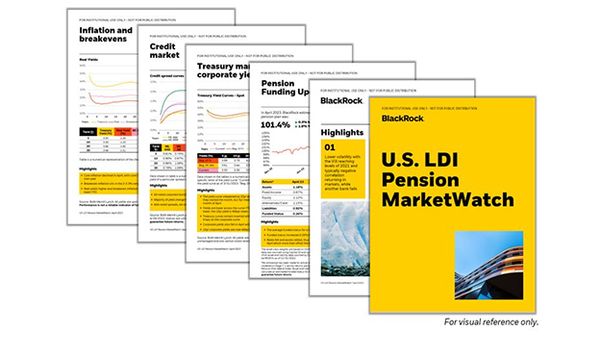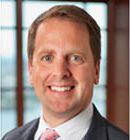Opportunities in fixed income and LDI
Outsourced Chief Investment Officer (OCIO)
How we serve corporate pensions
We provide corporate pension investors full access to the breadth and depth of BlackRock to help each client achieve their unique investment goals:
• Comprehensive OCIO services and whole portfolio solutions
• Stable streams of income via targeted strategies within our global fixed income platform
• Liability-driven investment solutions to drive stable streams of income
• Portfolio construction analyses from our dedicated Client Solutions Group team
• Cash management through our dedicated cash team to help meet liquidity needs
• Risk mitigation through our Aladdin technology
2025 U.S. corporate pensions themes
In this year’s corporate pensions outlook, we undertake a more comprehensive review of different ways corporate pension plan sponsors can use their surplus.
Investing strategies for corporate pensions
With access to BlackRock’s extensive suite of investment strategies across asset classes, our dedicated pensions team creates a tailored client experience built to address each client's unique objectives.
Fixed income
Corporate pensions seeking to achieve positive returns with historically lower risk than other asset classes are utilizing fixed income strategies such as Liability Driven investing (LDI) within their broader portfolio.
With Rick Rieder as BlackRock’s Chief Investment Officer of Global Fixed Income, BlackRock helps investors navigate the entire fixed income spectrum - from active & index, public to private, fundamental & systematic - to help deliver better outcomes, convenience, value and transparency for our clients.
Spotlight strategies for corporate pensions
Core and Core Plus
Unconstrained
Securitized
Liability-driven investing (LDI)
Our LDI platform provides defined benefit plan sponsors with the power and flexibility of one of the most comprehensive fixed income businesses in the world, combined with proprietary asset-liability focused technology.
Investments
Technology and innovation
Custom liability expertise
Outsourced Chief Investment Officer (OCIO)
BlackRock’s OCIO team aligns the firm’s investment expertise, robust research platform and advanced technology to help clients achieve their investment goals.
Whether it’s expertise in liability-driven investing, portfolio construction tailored to preserve funded-status levels or increasing transparency and flexibility, we begin every client relationship by seeking a deep understanding of their unique needs.
Dedicated CIO model
Broad investment toolkit
Daily monitoring
Cost-effective partnership
Equities
Corporate pensions seeking resilient medium-to-long-term capital appreciation and/or exposure to specific sectors in their diversified portfolio often look for investment opportunities across BlackRock’s extensive equity platform.
Our fundamental and systematic equity strategies offer investors curated access to global markets as well as key investment insights. BlackRock’s equity investors and researchers combine company-specific research, innovative proprietary modeling and industry analysis to provide clients with insights that aim to deliver consistent, differentiated outperformance.
Fundamental
Systematic
Index
Diversified alternatives
As corporate pensions look to expand beyond traditional allocations in search of alpha generation, such as capital appreciation and uncorrelated income streams, alternative strategies are playing an increasingly critical role in their portfolios.
At BlackRock we believe that the need for an approach to alternative investing that is scalable, disciplined, integrated, technology-enabled and transparent has never been greater. BlackRock's alternatives platform is designed to seek outperformance across a range of investment solutions such as private credit, private equity, infrastructure and hedge funds.
Spotlight strategies for corporate pensions
Private credit
Private equity
Infrastructure
Cash and liquidity solutions
Corporate pensions investors need effective cash management solutions that offer the liquidity needs for retirement plans in addition to broader corporate solutions while offering the potential for an enhanced yield profile hedged against risk.
BlackRock offers investment strategies and vehicles such as money market accounts (MMAs), short duration strategies, ETFs and separately managed accounts (SMAs) to provide liquidity options.
Tools and resources
Client Solutions Group (CSG)
BlackRock Educational Academy (BEA)
More tools and resources
Latest insights for corporate pensions




